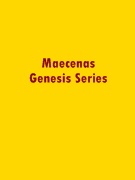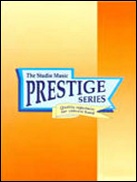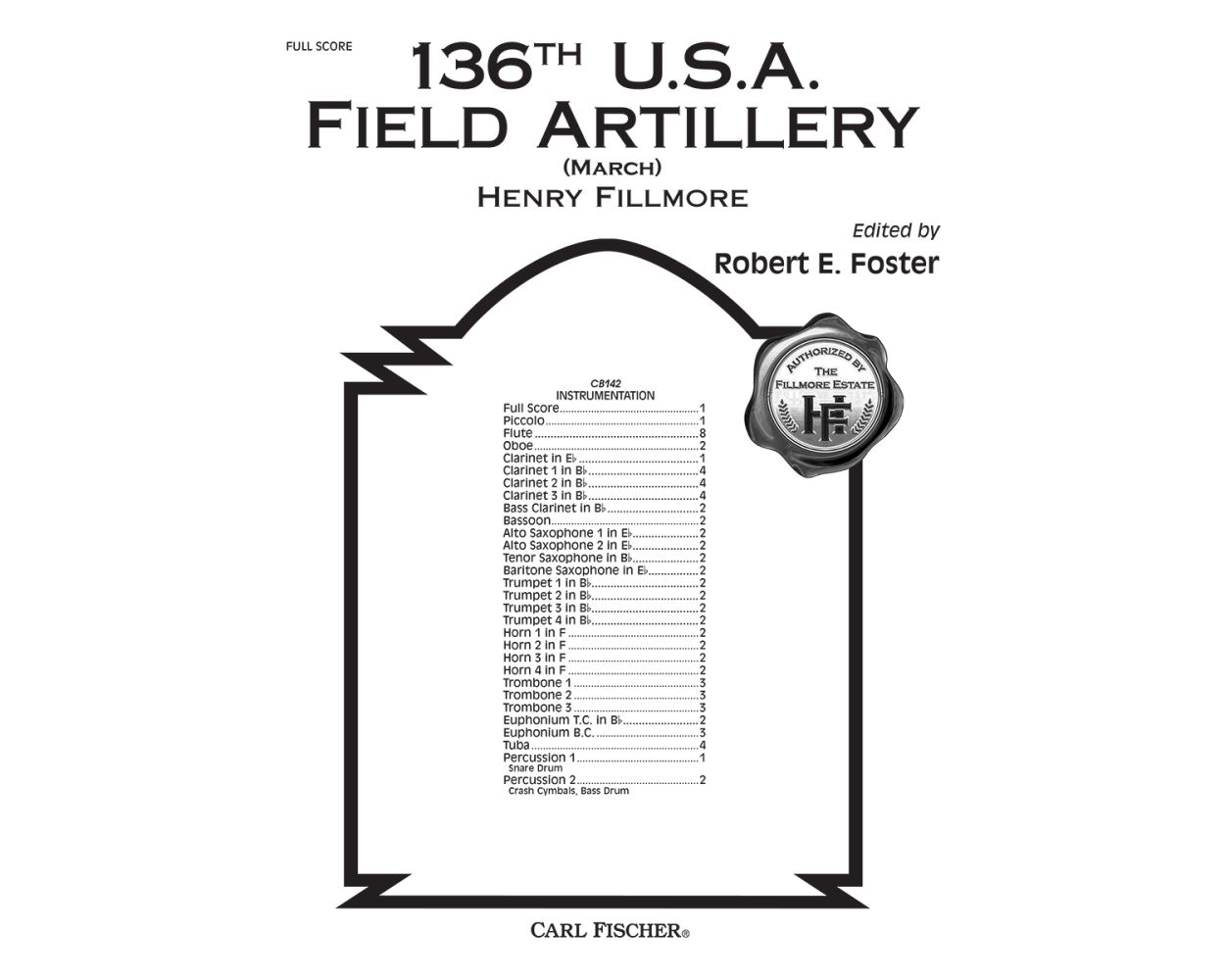Results
-
£54.99
Here comes Bobby the Bear Wind Band Set (Score & Parts)
Rock music is always a success. And when it is supported verbally as it is done in this composition, the party can begin. Bobby is a friendly circus animal that has seen a lot of the world. There is nothing left to wish for and his freedom from worries radiates from this rock march by Andreas Ludwig Schulte. 01:45
Estimated dispatch 7-14 working days
-
 £39.50
£39.50Juan For the Road (Concert Band - Score and Parts) - Carroll, Fergal
A Spanish Promenade. This lively little piece is in a continuous with no changes of metre. Though the overall marking is 'steady', it is based on a cheerful Spanish dance with a distinctly carnival mood which provides plenty of rhythmic interest and a few other delights along the way; the middle section is only slightly more reflective. The original title was 'Spanish Promenade', but then it seemed that before setting off in this time signature you would probably need 'Juan' - or even two - for the road. AB grade 2.5Duration: 02:30
Estimated dispatch 7-14 working days
-
 £74.99
£74.99O Mio Babbino Caro Wind Band Set (Score & Parts)
Giacomo Puccini composed Gianni Schicchi in 1918. It was the third opera of Il trittico (a trilogy). O mio babbino caro is a famous arietta sung by Gianni Schicchi's daughter Lauretta. The song is very melodic and it has a beautiful harmonization. This arrangement is ideal for smaller bands or bands missing certain players as it offers alternatives for many parts and will make an ideal encore. 0:02:30
Estimated dispatch 7-14 working days
-
 £124.95
£124.95SWORD AND THE CROWN, The (Prestige Concert Band - Score and Parts) - Gregson, Edward
In 1988 I was commissioned by the Royal Shakespeare Company to write the music for The Plantagenets trilogy, directed by Adrian Noble in Stratford-upon-Avon. These plays take us from the death of Henry V to the death of Richard III. Later, in 1991, I wrote the music for Henry IV parts 1 and 2, again in Stratford. All of these plays are concerned with the struggle for power (the crown) through the use of force (the sword) and they portray one of the most turbulent periods in the history of the British monarchy.This work quickly became established in the mainstream repertoire and has received performances worldwide as well as five commercial recordings and many broadcasts. In 2002 I was approached by the Parc and Dare Band regarding their summer festival and commissioned to do a version for brass band. This was given its first performance in Treorchy Hall by the combined bands of Black Dyke and Parc and Dare conducted by Nicholas Childs.When the Royal Air Force Music Services commissioned me to write a work especially for their British tour in 1991 I immediately thought of turning to this music and transforming some of it into a three-movement suite for symphonic band.The first movement opens with a brief fanfare for two antiphonal trumpets (off-stage), but this only acts as a preface to a Requiem aeternam (the death of Henry V) before changing mood to the English army on the march to France; this subsides into a French victory march, but the English army music returns in counterpoint. Finally, a brief reminder of the Requiem music leads to the triumphal music for Richard Plantagenet, Duke of York, father of Edward IV and Richard III (the opening fanfare transformed).The second movement takes music from the Welsh Court in Henry IV (part 1) which is tranquil in mood; distant fanfares foreboding battles to come are heard, but the folktune is heard three times in different variations and the movement ends as it began with alto flute and gentle percussion.The final movement starts with two sets of antiphonally placed timpani, drums and tam-tam, portraying the 'war machine' and savagery of battle. Trumpet fanfares and horn calls herald an heroic battle theme which, by the end of the movement, transforms itself into a triumphant hymn for Henry IV's defeat of the rebellious forces.- Edward GregsonPerformance time 13'54"Recorded on QPRM117D FESTIVAL OF MUSIC 1991, Massed Bands of the Royal Air ForceRecorded on QPRM120D THE SWORD AND THE CROWN, Central Band of the Royal Air Force'Finale' recorded on QPRM142D FESTIVAL OF MUSIC 2002, Massed Bands of the Royal Air Force)
Estimated dispatch 7-14 working days
-
 £60.00
£60.00Doppler Effect
The term Doppler Effect describes the aural phenomenon of something changing pitch relative to what direction it is traveling in relation to the listener. An example is when a siren coming towards you is higher in pitch then when it is going away from you. Sean O'Loughlin uses this fascinating concept to construct an original composition that uses instances of this effect. A broad melody acts as a connective element in the piece, with a multitude of teaching opportunities for dynamics and musicality.
Estimated dispatch 12-14 working days
-
 £80.00
£80.00136th U.S.A. Field Artillery - Henry Fillmore
Editor Robert Foster has uncovered another forgotten Henry Fillmore march and restored it to its rightful place in band repertoire. This may be one of the best Fillmore marches we have heard that is for the most part still unknown. Written to stir patriotism during World War I, all of the wonderful Fillmore trademarks are present in this exceptional march. It is tuneful, exciting and well-scored; presented in a full score edition for the first time, exactly as Fillmore intended it to be.
Estimated dispatch 12-14 working days
-
 £148.00
£148.00Waterfall - Gauthier Dupertuis
Gauthier Dupertuis was inspired to write the main theme of Waterfall by a stroll near a waterfall that is the pride of his hometown. This piece, composed during lockdown due to Covid-19, is also a reflection on homesickness. Waterfall also expresses the composer's feelings about enjoying a welcome break and return to his roots, which enabled him to spend more time with his loved ones. For him, this waterfall is a symbol: it's not the same water that flows there, but the waterfall is still there, the same as it was when he was a child, like a witness to times gone by. Waterfall is a work with a certain sentimental value for the composer in that it was his very first real composition.The work was premiered on 9th October 2020 by the Wind Band Societat Musical 'La Constncia' of Moixent (Spain) and was conducted by Jos Alberto Pina.
Estimated dispatch 7-14 working days
-
 £252.10
£252.10Abstractions - Torstein Aagaard-Nilsen
The titles of this three-movement work are abstractions where visual experiences are thought to be recreated as music, i.e. an abstract presentation of a motif, similar to an abstract image where one cannot immediately see the similarity.The first movement is inspired by the northern lights. It constantly changes in colour and shape.The title of the second movement is a play with the word "rock" is a well-known word describing a musical genre.But it is also a giant stone or a part of a mountain.The titles of this three-movement work are abstractions where visual experiences are thought to be recreated as music, i.e. an abstract presentation of a motif, similar to an abstract image where one cannot immediately see the similarity.
Estimated dispatch 7-14 working days
-
 £137.99
£137.99Call of the Aboriginals - Satoshi Yagisawa
Call of the Aboriginals Uluru - Kata Tjuta was commissioned by Nara Municipal Ichijo Senior High School Symphonic Band, Nara City, Nara Prefecture, Japan, to commemorate their 60th anniversary. Uluru, also known as Ayers Rock, is an immense monolith rising in the vastness of the Australian outback. Famously also known as Ayers Rock, it is listed by UNESCO as a World Heritage Site. It is a sacred site for the Aboriginal people of the area, the Pitjantjatjara Anangu, but has also become a popular tourist destination, creating cultural and environmental conflicts. This work, which is written in a style typical of the composer, tells a dramatic tale adventure inspired bythe life of the indigenous people and the magnificent scenery of Uluru. This work is suited for contests as well as thematic concerts.
Estimated dispatch 7-14 working days
-
 £137.70
£137.70Sjakkmatt! - Hans Offerdal
How do you experience the final thrilling minutes of a chess game when your opponent has taken the upper hand? And how does it actually feel being beaten checkmate? This piece gives you the answers! There are challenges in use of dynamics, articulation, intensity and gradually increasing tempo. Dissonances are present several places, but the voice leading is diatonic and often in repeating patterns. The whole piece is based on one single scale: Bb major scale with augmented fourth and minor seventh. It is notated as a concert Bb major scale with two accidentals. Feel free to use it during warm-up!
Estimated dispatch 7-14 working days
